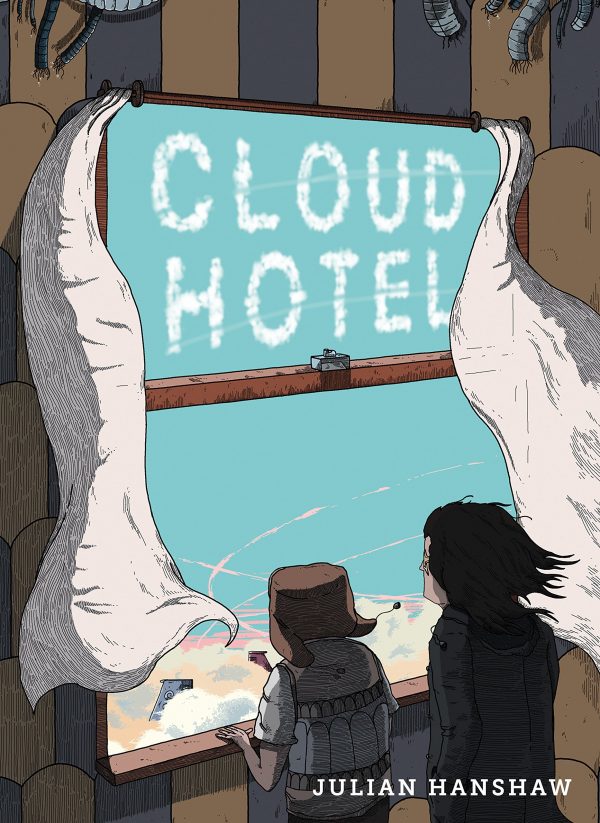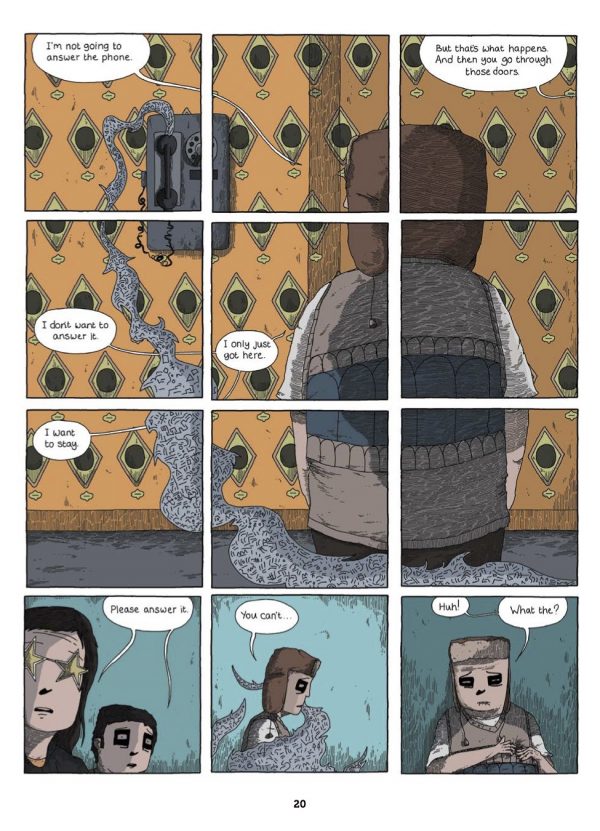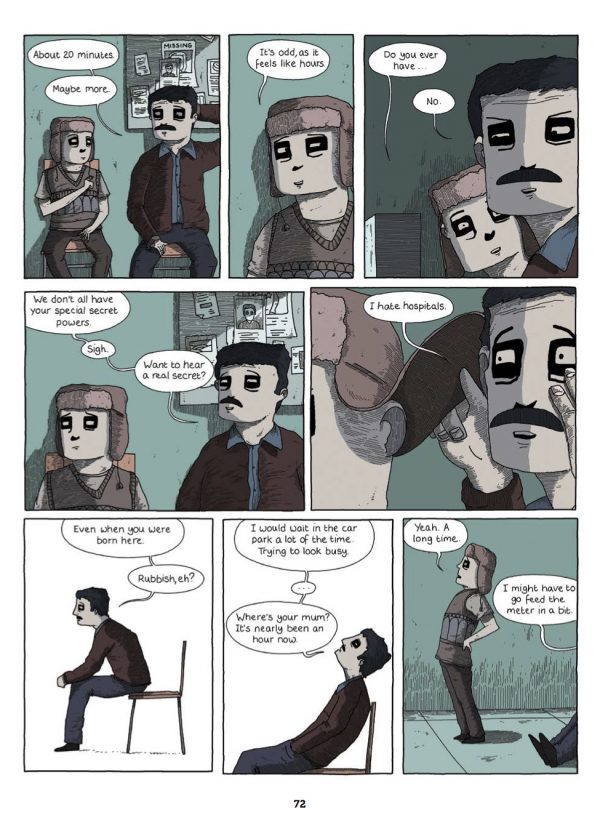In his previous graphic novel Tim Ginger, Julian Hanshaw touched up on UFOs in context of their place in popular conspiracy culture, mysterious but unlikely. In Cloud Hotel, Hanshaw does the exact opposite — he puts UFOs front and center, but somehow makes them more mysterious by doing so.
Hanshaw says that Cloud Hotel is based on an experience he had as a kid when his family spotted a strange hovering light in the sky. But Cloud Hotel isn’t autobiographical. It isn’t about that night with Hanshaw’s family. It’s a story of possibilities, of Hanshaw’s own imagination taking flight at the notion that the sighting repeats itself.
That’s what happens when Remco takes to the woods with a friend, to find the spot where his family sighted something weird the night before. It’s casually tossed off that there are missing kids, but we don’t really think much about that, excited at the boys’ late night trek into the unknown. It reminds any of us of our own childhoods.
But this time Remco is bathed in a light coming down from the object, and he finds himself in a hotel with other children, most notably Emma, with the stars for eyes. A phone on the wall rings and Remco is directed to answer it. He refuses and has a strange spell, finding himself at home.
As time passes, Remco realizes he can shift between the strange hotel and his own life, while none of the other children can. And when it comes down to just two inhabitants living in the hotel, Emma begins to wonder why Remco has that fluidity while she still waits for the phone to ring for her to tell her she can go home.
In flitting back and forth, Remco tries to figure out what Emma’s fate in the real world has been, but he also contends with the aftermath of his own brief disappearance and the confusion his parents feel, while also obsessing about a library in the hotel that has books corresponding to each resident.
In its totality, Hanshaw has created a rich backdrop for his strange little drama, and I’m guessing in an era where people like stories like these for the mysteries as they await a revelatory bang, Hanshaw’s execution might be frustrating to some. It’s a quiet little book and it holds its answers close. In fact, it barely hints at any, and as Remco has his experience, Hanshaw proves uninterested in spelling out the situation.
I think that’s one of the books great strengths, and Hanshaw’s art adds a dark surrealist quality to the experience. No one would expect a dream to unveil itself with logic, since dreams are the essence of us unleashed upon ourselves, and the dreamlike quality of Remco’s experience drive this home. There is no explanation because, in dreams, we ask none. Things just are. We accept them as we experience them.
The alternate sequences in the so-called real world, though, offer just as little explanation. People are as much a conundrum as hovering objects in the sky. Real life can be dream-like when it is bathed in confusion. All experiences, including fantastical ones, including psychologically heightened ones, are part of a continuum. In Hanshaw’s presentation, there is no supernatural. There is only the natural and it is a very enigmatic thing.











Comments are closed.